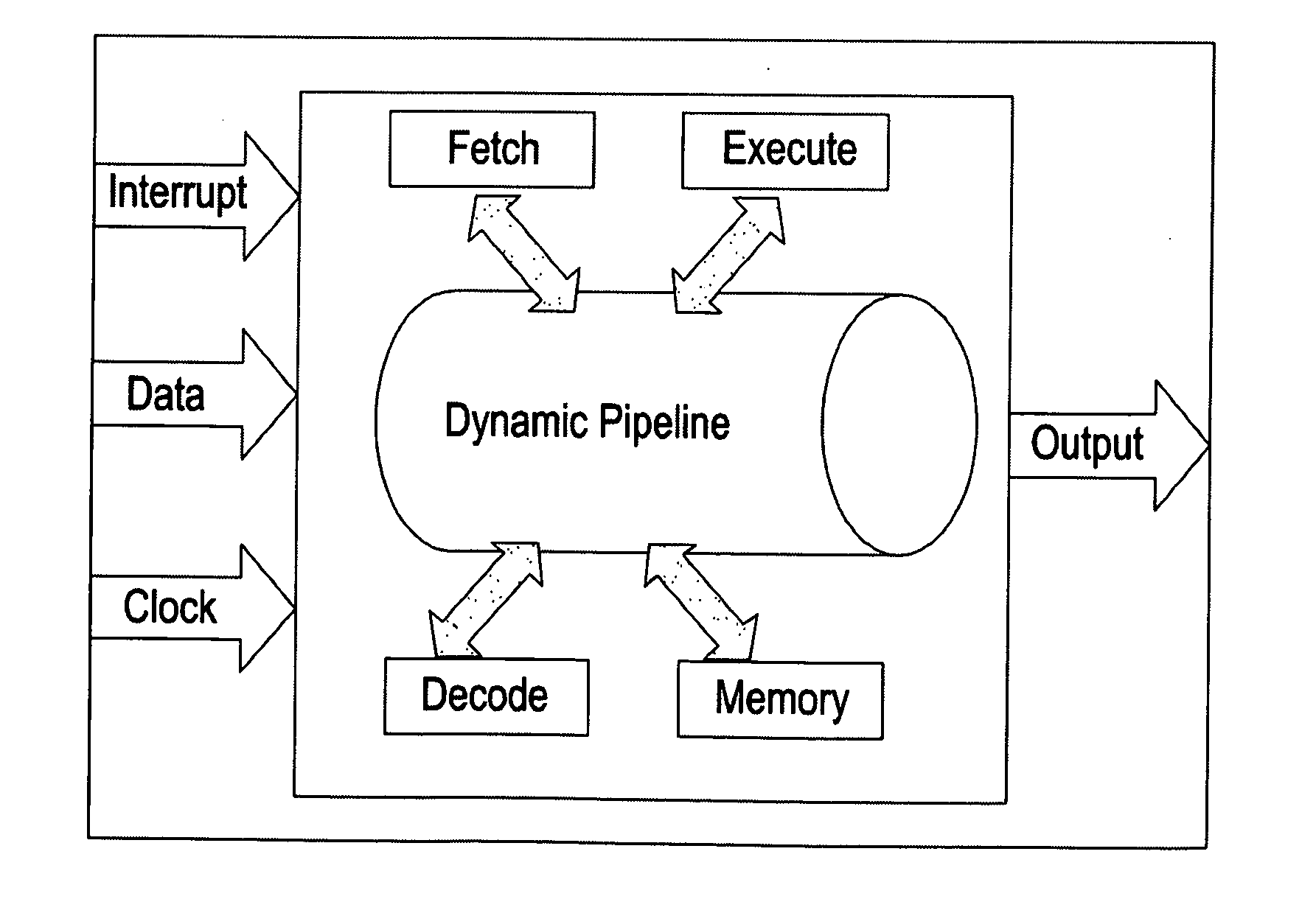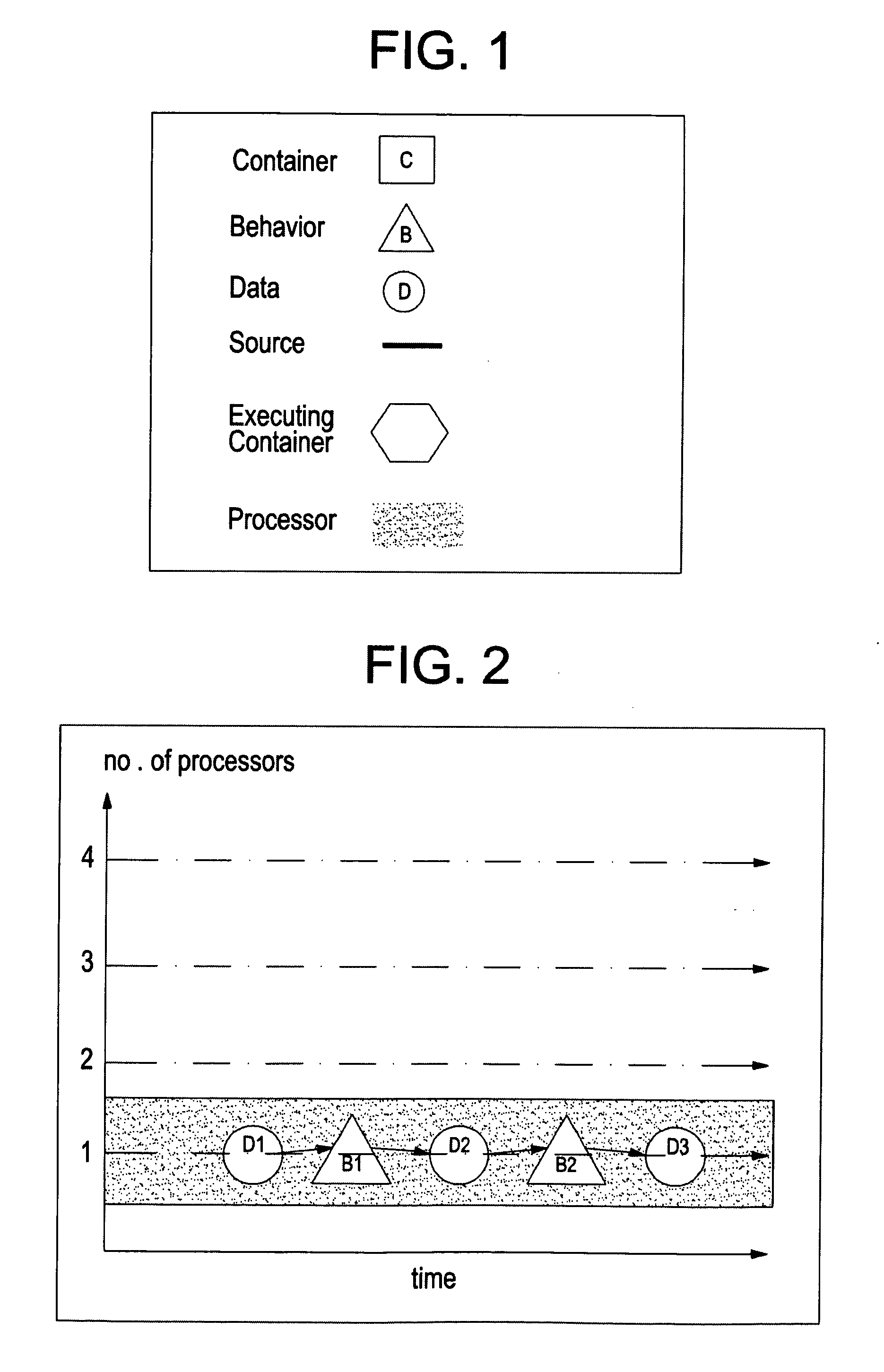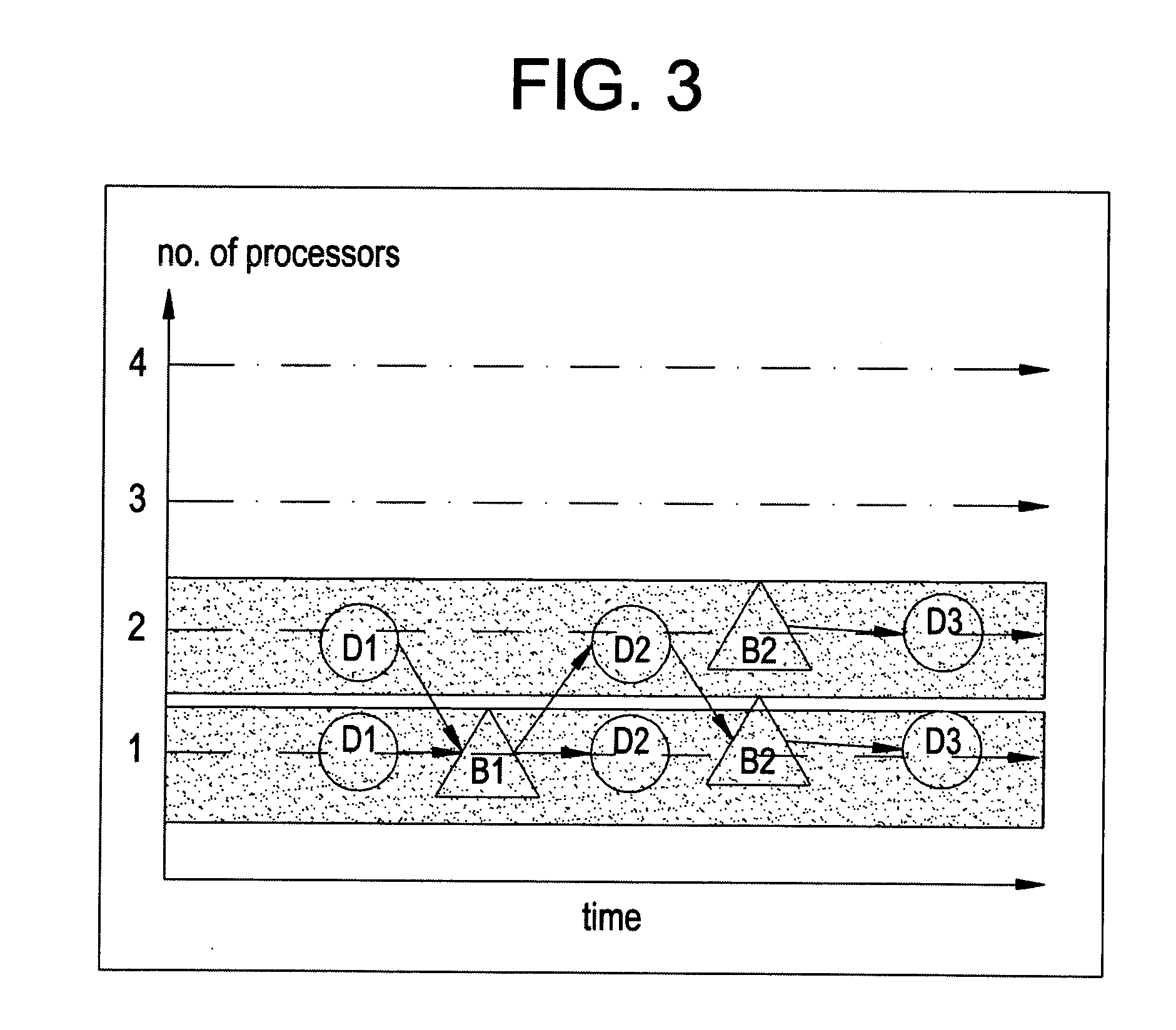Method and system for reactively assigning computational threads of control between processors
a technology of computational threads and processors, applied in the direction of program control, interprogram communication, specific program execution arrangements, etc., can solve the problem that the coordination model cannot make accurate adaptive changes, and achieve the effect of facilitating concurrent system bus communication and facilitating decomposition of applications
- Summary
- Abstract
- Description
- Claims
- Application Information
AI Technical Summary
Benefits of technology
Problems solved by technology
Method used
Image
Examples
Embodiment Construction
[0046]The present invention concerns a method and system for reactively assigning computational threads of control between processors. In particular this invention provides a coordination model implemented by a software framework. The coordination model comprises five (5) entities which implement the three previously defined elements of a coordination model:
[0047]1) Behavior entities are the computational threads of control, which are executed by a Container entity;
[0048]2) Data entities are the result of the execution of a Behavior, that is, are input and / or output to associated Behavior execution;
[0049]3) Container entities are part of the coordinating media, and retrieve, create, execute and store Behavior and Data that are contained within. In general, a Container is associated with each physical Processor, however Containers are also able to dynamically control the instantiation of additional Containers per processor based upon, for example, the blocking status of executing Beh...
PUM
 Login to View More
Login to View More Abstract
Description
Claims
Application Information
 Login to View More
Login to View More - R&D
- Intellectual Property
- Life Sciences
- Materials
- Tech Scout
- Unparalleled Data Quality
- Higher Quality Content
- 60% Fewer Hallucinations
Browse by: Latest US Patents, China's latest patents, Technical Efficacy Thesaurus, Application Domain, Technology Topic, Popular Technical Reports.
© 2025 PatSnap. All rights reserved.Legal|Privacy policy|Modern Slavery Act Transparency Statement|Sitemap|About US| Contact US: help@patsnap.com



